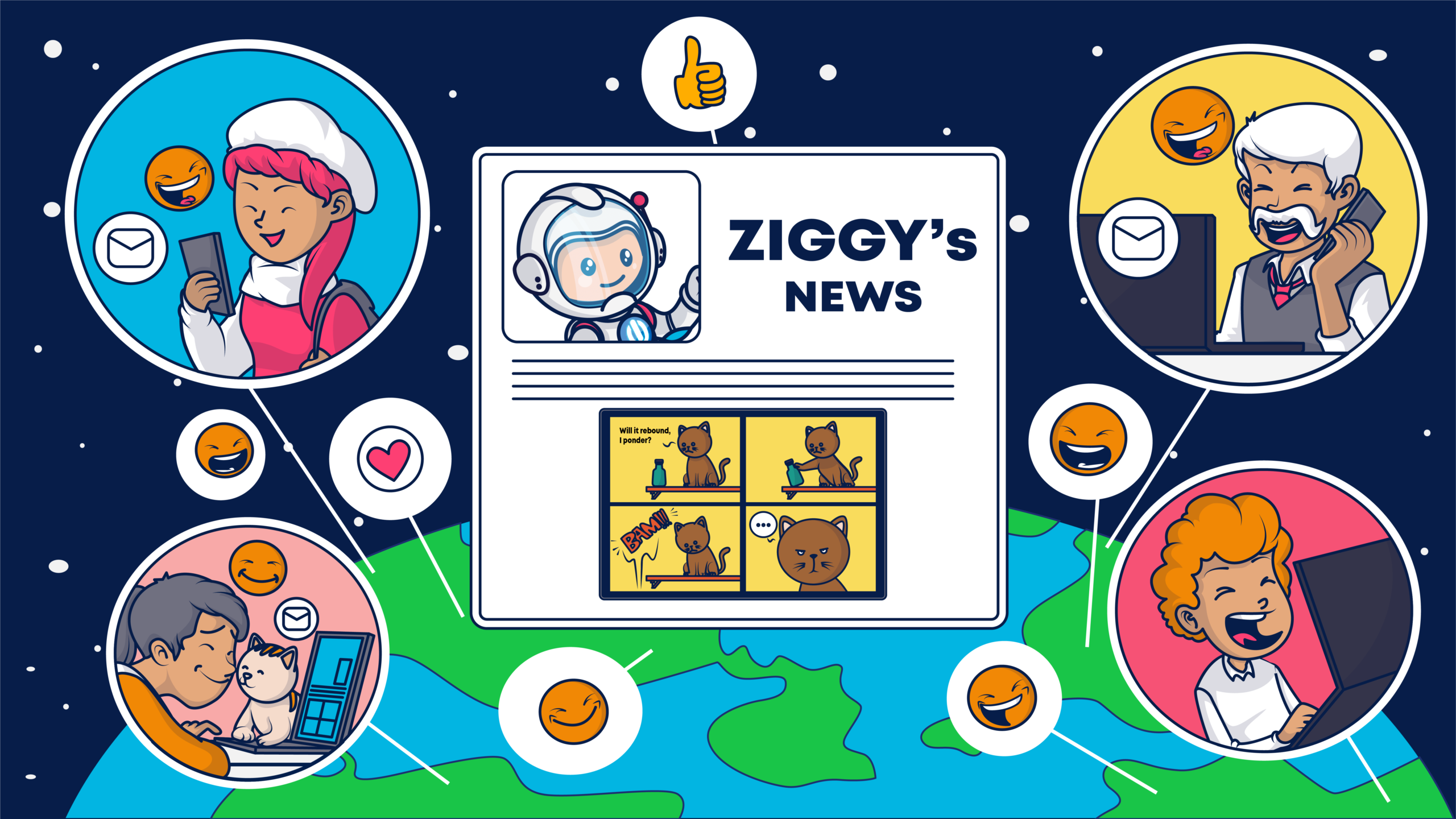It’s a new year and with that comes new resolutions for the following 12 months. There are always ways to improve, to optimize the email marketing channel further, but where do you start? To help we’ve asked the email marketing experts: Jacob Hensen, Josh Nason, Ofer Shani, Travis Walton, Jenna Tiffany, Kath Pay, Bryan Jenkins, John Thies and Jordie van Rijn for their top tips on how to improve the email operation in 2019. Here’s what they had to say:
“What’s your expert advice for professional marketers striving to improve their email operation in 2019?”
 Jordie van Rijn, Email Marketing Consultant at EmailMonday:
Jordie van Rijn, Email Marketing Consultant at EmailMonday:
If you say improve your email operation, I think you mean the day-to-day work. And that is funny because my answer would be to step back to prevent staying in your day-to-day mindset. That is the best place to find improvements for your operation.
See where the bottlenecks are. If you need to do find new email marketing software, or a different MTA type, start with that early in the year. For your program, monitor and write down what is taking lots of effort, time or money (in that order). Then see if you can cut, automate or outsource it (also in that order).
Not doing things is the most efficient way to save time in Marketing.
Only then look at new opportunities and pick the right ones. For instance there are enough ideas for email A/B testing, but pick the simple to execute before moving on to do elaborate testing. See if there is any chance to do upgrades of your program that are virtually “plug-and-play”. So that could be send-time-optimization, recommendation engine or lead capture tools.
About Jordie: Jordie van Rijn is an email marketing expert, and one of the few “original thought” leaders in the Marketing and MarTech industry. He is the founder of the international platform for Email and Marketing Automation Software selection www.emailvendorselection.com.
 John Thies, CEO and Co-Founder of Email on Acid:
John Thies, CEO and Co-Founder of Email on Acid:
Auditory-Call-to-Actions (ACTA’s)! Start thinking about how your subscribers are going to engage with your campaigns from an auditory perspective. Voice technology is changing how, we as consumers, interact with the world around us. We are now immersed in the technology. It’s in our cell phones, cars and homes.
With a recent update to Amazon’s voice assistant (Alexa), we can now listen to and even respond to emails by using our voice. In the near future, Google will provide the ability to listen to emails using their Google Assistant. Not sold on the idea yet? Here are some statistics that provide insight into the current size of the voice assistant market:
Amazon has sold over 100 Million devices that have access to Alexa
Amazon has pre-sold over 1 Million Echo Auto devices
Google announced that there are over 1 Billion devices (Android, iOS, etc.) that have Google Assistant installed/available
iOS is the most popular email client and SIRI can read your emails
Below are some tips to help you get started:
1. Always use a valid “reply-to” address. Email should be a one-to-one interaction that gives your subscribers an opportunity to engage with your brand. This is even more important now that a subscriber can reply to emails using his/her voice.
2. Use Trustworthy From Name. Always use a trustworthy and recognizable from name. If you are sending a campaign on behalf of your company and you use an individual’s name; be sure to follow it up with the company name as well. (i.e. John Thies on behalf of Email on Acid)
3. Create an Engaging Subject. The subject, along with the from name, is the first interaction the subscriber has with the email through Alexa. Make it count!
4. Avoid Image-Only Designs. Alexa will strip all the HTML from the email and read the text that is remaining. This could be bad news for image-only emails. If your call-to-action is in an image, the user won’t hear it. If you must use an image-heavy design, be sure to provide enough context in the preheader text.
About John: John Thies is the CEO and Co-Founder of Email on Acid, a pre-deployment Email QA platform that strives to remove the inherent fear of hitting the “Send Button”. He’s a passionate and engaging industry leader who lives, breathes, and dreams in email (seriously). John also serves as the CEO of Cause for Awareness, a recently formed non-profit that empowers other non-profit organizations with digital marketing resources. He resides in Denver, Colorado with his wife and son.
 Bryan Jenkins, Director of EmailOversight:
Bryan Jenkins, Director of EmailOversight:
Implement strong 3rd party solutions to help streamline the mailing operation from data acquisition to data maintenance and deployment. I think the common theme coming out of 2018 and heading into 2019 was to make mailing easier on the marketer. There was always a misconception, I believe, within the email community that everything had to be built or done in house. In other words, the systems and processes in place for a successful email operation had to be created and kept within the company. There’s no further truth.
Heading into 2019 don’t be afraid to research and find the best services to get you as organized, prepared, and ready for optimal email efforts. It starts at the top with data acquisition; Simplify your data input through a database management solution. These services will facilitate the maintenance that needs to be done with normalizing, organizing, and segmenting your various data feeds and sources.
Once your data is held and readily available through a custom DB solution, make sure you automate your email validation and cleaning practices through your current Email Validation vendor.
Everyone knows the importance of validating and cleaning an email address prior to deployment to avoid both delivery and reputation based problems, but it’s equally important to put in an automated workflow from acquisition to validation so you’re not missing cleaning data coming into your databases or recleaning data over time.
Combining the efforts of a database management solution with an email validation vendor will allow you the peace of mind knowing all data coming into your hands will be ready for deployment after a through verification.
Lastly, use multiple SMTP delivery vendors to expand your email presence and take advantage of more than one vendor’s delivery capabilities. The most successful email marketing companies use more than one provider to achieve their best delivery footprint as they recognize the strengths of each service they use.
About Bryan: Bryan Jenkins is the Director for EmailOversight; a leader in email address validation, threat assessment, and data append. Bryan has over 15 years of experience in both the email and online marketing industry while focusing his attention on email cleaning practices and data assurance. His experience has helped email marketers to improve their email deliverability and protect their online reputation.
 Kath Pay, CEO of Holistic Email Marketing:
Kath Pay, CEO of Holistic Email Marketing:
Where to begin? I believe you can’t go wrong if you follow these three steps:
1. Create a robust, written strategy
In a recent survey we found that 55% of marketers do not have a written strategy in place – which is quite astonishing. And a good many of those that do only have a quarterly roadmap of tactics in place, rather than a robust, living, breathing strategy in place that is used to deliver upon the business’ objectives.
So, my first recommendation is to create one. This will become your roadmap for success as it will contain your business goals, your marketing objectives per lifestage (acquisition, conversion, retention, win-back etc.), your strategies to support these marketing objectives and finally all the tactics that you will use to bring these strategies to life.
2. Focus on creating a programme based on Customer Experience Email Marketing
Customer Experience is now positioned to be a key differentiator in addition to pricing when consumers are in the consideration period. As an email often kick-starts a customer’s journey with the brand, it’s key we recognise this and deliver an optimum customer experience on the way to as well as on the website.
At Holistic we identified 3 Pillars to great Customer Experience Email Marketing – Helpfulness, Personalisation and Customer-Focus. Get these right and you’ll be on your way to achieving better short-term results as well as increasing CLTV.
3. Test and improve
We all know we should do it, yet very few of us actually do. And the majority of those who do, don’t do it correctly. When conducted correctly and performed as an iterative process, testing drives the results we desire. It comes with a bonus of not only benefiting immediately from the test result, but also allows us to discover insights about our audience.
About Kath: Kath lives and breathes email marketing and is recognised as a leading international email marketing thought leader. As CEO of Holistic Email Marketing, she devotes her time to developing customer-centric ecommerce journeys using a holistic, multi-channel approach. With a wealth of knowledge gained from being an industry veteran of 19 years, Kath is an author, blogger, expert contributor, international conference speaker, and trainer.
 Jenna Tiffany, Founder & Strategy Director at Let’sTalk Strategy:
Jenna Tiffany, Founder & Strategy Director at Let’sTalk Strategy:
As soon as the new year begins, it’s exciting to get started working on new plans and new ideas without evaluating or analysing last year’s strategy. This may seem like a boring way to start a new year, but it will be very fruitfall in understanding the areas that worked and performed well in comparison to campaigns or segments that didn’t perform as well as expected.
Utilising tools such as a SWOT (strengths, weaknesses, opportunities and threats) are a good way of assessing your current position and the internal factors that may be affecting your email operation this year. The RACE model is also a great tool to use to break down the various ways you can Reach, Act, Convert and Engage your audience.
It’s through conducting such analysis that the email operation learns, and as marketers we learn and grow in our discipline. Many research reports are conducted, and one research piece I am part of is the DMA Consumer email tracker report. 2019’s report highlights that only 14% of consumers said more than half the emails they receive from brands are useful. There’s a key takeaway for email marketers, provide useful emails to your subscribers to stand out in the inbox. Put the customer back in the centre of your activities, your focus, goals and email strategy to compete in the inbox in 2019.
Another area to watch is voice usage in email. Alexa can now read emails, and while this is still in the basic stages, this could potentially pave a new way of consumers interacting with email. So keep an eye on the latest developments in technology and changes in consumer behaviour because this can have an impact on your email marketing success.
About Jenna: Jenna is the Founder & Strategy Director at Let’sTalk Strategy. Jenna is a Chartered Marketer, an awarded Fellow of the IDM and an elected member of the prestigious DMA UK Email Council, Chairing the Best Practice hub. Jenna is a reconigsed email expert consulting with brands such as Hilton, Shell and World Duty Free to name a few.
 Travis Walton, Technical Account Manager at Mailgun:
Travis Walton, Technical Account Manager at Mailgun:
A new year marks a new start – an opportunity to iterate and improve upon the performance of your email marketing campaigns from 2018. As a Technical Account Manager with Mailgun, I am charged with working directly with clients to ensure their success on our platform and to improve their deliverability by adopting proven strategies and practices of responsible senders.
From my vantage, the one greatest determinant to sustainable inboxing across all the major ISPs, including Gmail, is maintaining a strong engagement rate by keeping your open and click rates high relative to the overall volume you are sending. This is a multifaceted effort, so consider the following to maintain high engagement regardless of volume:
- Send to recipients that want and will engage with your email. While this sounds easy, it can be pretty complex as it encompasses list acquisition, customer experience, onboarding practices, and message content.
- Understand the cutoff point of non-engagement and remove or heavily limit sending to non-engaged recipients. Part of this ties with the overall frequency in your send. If you send anywhere near a daily message, you should consider dropping recipients within 30 days of non-engagement. Other options include sending a final win-back campaign or, at the very least, slowing frequency in sending considerably (e.g. from daily to now every 30 days).
- Signal boost to your highest engagers by sending more frequently or using triggered events to send an email soon after you detect positive engagement. Similar to dropping non-engagers sooner, increasing the frequency of sending to your strongest engagers will have a positive impact.
Attaining and maintaining a strong sender reputation is not easy, but the work will pay dividends in ROI by delivering your message into the inbox at a higher rate.
About Travis: Travis is a Technical Account Manager with Mailgun, where he supports a diverse account base in the use of the Mailgun platform, and guides them through the complex landscape of email deliverability. When not thinking about email, he wonders about the internal life of his eccentric dog.
 Ofer Shani, President & Co-Founder of Ongage:
Ofer Shani, President & Co-Founder of Ongage:
Improving your email operation in 2019 should continue the journey towards PLCT (Personalized Location based Content on Time).
There are no new secrets to make your marketing work better for you. The basic concepts laid down in the last decade are here to stay:
You want to send your audience things they want
You want to send them appropriately as to where they are
You want to send them interesting and valuable content
You want to send it in the best time for them
So what is new?
The major new part are all the new technologies and services that follow that allow you to better to PLCT. In 2019 we will see more mature services that enable personalization via integrations to content platforms with vast data. We will see smarter ways to get the content on the right time to your audience.
These concepts are what we see behind smart solutions that incorporate MA (Marketing Automation) and AI (Artificial Intelligent) capabilities.
So what should I do?
You should review your email program, see where you are within the PLCT program and where you are not and go look for the missing parts that will get you there.
when you do all of the above – less will become more. When you put in place PLCT, you’ll be able to send less emails, yet increase effectiveness, ROI, customer satisfaction and brand reputation!
About Ofer: Ofer Shani is the President and General Manager of Ongage. Ofer’s years of experience spearheading large development groups at companies such as Telemesser, 888 and JobInfo, are being put to good use at Ongage and ensure that new innovations are executed flawlessly.
 Josh Nason, Senior Email Deliverability Consultant at Oracle Dyn:
Josh Nason, Senior Email Deliverability Consultant at Oracle Dyn:
It always starts with the data. For obvious reasons, marketers really focus on the creative when it comes to bulk email marketing, but award-winning creative won’t mean anything if you are sending to the wrong people. Essentially, it’s the old ‘if a tree falls in the forest’ analogy.
My process always starts with removing inactive users. While sending to a dead inbox may not seem like a big deal, it can hurt your sending reputation as providers like Gmail
and Microsoft heavily weigh engagement levels with respect to the inbox vs. the
junk folder. The more you send to inboxes that aren’t active, the more it
affects the email you are trying to get through to your still active users.
The era of flaunting the big list is over as engagement is now king.
As far as where that engagement cutoff is, every sender/company is different. I would remove any emails that have seen no activity in more than two years and begin the cutdown from there. Look at your numbers from signup and find where users are dropping off. You can then correlate to the amount of emails you are sending in a given
timeframe and figure out if you’re sending too much or even too little.
We find that a good sweet spot is generally around 12 months which can fluctuate depending on seasonal buying habits and sending reputation. Those with a worse reputation usually have to make bigger cuts to start with and then can begin expanding
that out after an extended period of positive engagement numbers and increased
reputation.
Once that is figured out, I would advise looking for any possible way to segment users (product, interest level, type of customer, etc). Sending uniquely tailored email is key
to high engagement levels and thus, an increased sending reputation. Start small
with segmentation and as you get resources to build more specified campaigns,
expand out your efforts while thinking through the process of who you are trying to reach and what your desired outcome of those efforts is.
A high performing database is the gateway to a high performing email program.
About Josh: Josh Nason is a senior email deliverability consultant for Oracle Dyn’s cloud-based email team, and has worked in the email industry for more than 10 years. He specializes in content creation, campaign evaluations, and strategic planning initiatives.
 Jacob Hansen, Manager, Email Delivery | Expert Services at Twilio SendGrid:
Jacob Hansen, Manager, Email Delivery | Expert Services at Twilio SendGrid:
During all of our consultations, we always surround a core idea that you need to constantly please the mailbox filter as well as the human recipient. The method behind appealing to each has its own method and strategy. We have seen plenty of blogs, webinars and coaching around how to build engaging content. For this post, we’ll focus on how to “think like a filter”.
First, be legal. Research the laws around email for the countries where your recipients reside. And, abide by those laws. Filters can detect ways a sender may not be complying with some of these basic laws. The biggest update we saw around this in the recent past was GDPR. In case you weren’t aware or haven’t heard much about this, here is a blog with resources on the subject, as well as how these laws, actually benefit marketers. The main reason strict laws like GDPR are good for marketers is that they align closer to what major filters, like Gmail, want to see in terms of best practices from email marketing streams.
But, yes, there’s more. Of the billions of messages these filters see in a day, their algorithms are looking to see which bulk (aka “one to many”) sender deserves to be in front of the users. In this lens, they are looking for the history around how messages from your sending IP and domain have been engaged with in the recent past. Remember, this email channel is still viewed by filters as a line of communication between individual humans. Yes, marketers have figured out how to use it and a lot of that mail is very wanted by users. But not all of it. The filters are acting cautiously to make sure their inbox user doesn’t get too frustrated by the volume of unwanted mail and move to a different inbox provider.
So, look at which recipient groups you send to. Look at your authentication and domain alignment. Then look at your subject, content, timing and personalization. Does any of it seem like a filter may believe this user (or group of users) may not show evidence of really wanting this message?
Controlling all of these variables will let you narrow down to which element is affecting the delivery of your great messages.
Happy sending!
About Jacob: Jacob comes from a background in technical account management and delivery analysis for the last seven years, and has been with SendGrid’s Deliverability Consultant team for the last 4 years. He enjoys spreading knowledge to help the email community send more “wanted email” and to help senders realize their full potential.
What’s the takeaways?
So to sum up the insightful tips our experts have provided. Set up solid foundations for your email marketing, defining and documenting your strategy. Keep your finger on the pulse regarding advancements such as voice technology and keep an eye on the performance of your campaigns – is engagement dropping or increasing when you send particular types of campaigns for example? This insight will also help you when defining your email marketing strategy.





 Jordie van Rijn, Email Marketing Consultant at
Jordie van Rijn, Email Marketing Consultant at 
 John Thies, CEO and Co-Founder of
John Thies, CEO and Co-Founder of 
 Bryan Jenkins, Director of
Bryan Jenkins, Director of  Kath Pay, CEO of
Kath Pay, CEO of  Jenna Tiffany, Founder & Strategy Director at
Jenna Tiffany, Founder & Strategy Director at  Travis Walton, Technical Account Manager at
Travis Walton, Technical Account Manager at  Ofer Shani, President & Co-Founder of
Ofer Shani, President & Co-Founder of  Josh Nason, Senior Email Deliverability Consultant at
Josh Nason, Senior Email Deliverability Consultant at  Jacob Hansen, Manager, Email Delivery | Expert Services at
Jacob Hansen, Manager, Email Delivery | Expert Services at 






